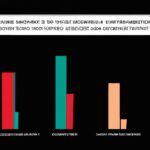The Atkinson index is a commonly used measure to assess income inequality. However, it has limitations that can be addressed by considering alternative measures. One option is the Gini coefficient, which provides a broader perspective on income distribution. Another alternative is the Palma ratio, which focuses on the ratio of income shares between the top and bottom 40% of the population. Implementing these measures in conjunction with the Atkinson index can provide a more comprehensive understanding of income inequality. By examining multiple measures, policymakers and researchers can better identify and address disparities in income distribution, ultimately working towards a more equitable society.
Table of Contents
- Cost of Living Adjustments (COLA) as an alternative measure
- Definition of the Atkinson index
- Gini coefficient as an alternative measure.
- Limitations of the Atkinson index
- Poverty headcount ratio as an alternative measure
(Alternative Measures of Income Inequality)
The Atkinson index is a widely used measure of income inequality that focuses on the distribution of income in a society. However, it has its limitations and may not capture all aspects of inequality. As a result, alternative measures have been proposed to complement the Atkinson index and provide a more comprehensive understanding of inequality.
One such measure is the Gini coefficient, which is a ratio of the area between the Lorenz curve (which represents the actual income distribution) and the line of perfect equality to the total area under the line of perfect equality. The Gini coefficient ranges from 0 to 1, with 0 indicating perfect equality and 1 indicating maximum inequality. Using the Gini coefficient alongside the Atkinson index can provide a more nuanced picture of inequality.
Another alternative measure is the Palma ratio, which compares the share of income held by the top 10% of the population to the share held by the bottom 40%. This measure focuses on the extremes of the income distribution and is particularly relevant for understanding the concentration of wealth.
Additionally, the Theil index can also be used as a complement to the Atkinson index. The Theil index measures both inequality within subgroups and between subgroups, allowing for a more detailed analysis of inequality at different levels of society.
By incorporating these alternative measures, policymakers and researchers can gain a more comprehensive understanding of income inequality and design more targeted interventions and policies to address it. However, it is important to note that no single measure can capture the complexity of inequality, and a combination of measures is often recommended for a more accurate analysis.
Cost of Living Adjustments (COLA) as an alternative measure
Cost of Living Adjustments (COLA) serve as an alternative measure to complement the Atkinson index, offering valuable insights into the changing economic landscape. COLA accounts for the rising costs of essential goods and services, providing a realistic estimate of the adjustments needed to maintain a decent standard of living.
Amid fluctuating economies, the COLA index considers numerous factors that impact individuals and families’ everyday lives. It focuses on essential items such as food, housing, transportation, healthcare, and education, which contribute significantly to the cost of living. By incorporating these core elements, COLA effectively captures the true impact of inflation on individuals’ purchasing power.
One of the key advantages of COLA is its ability to capture regional differences accurately. It recognizes that the cost of living can vary greatly between different areas, cities, and even neighborhoods. By factoring in regional disparities, COLA provides a more nuanced perspective on the economic realities faced by diverse communities.
Furthermore, COLA takes into account the evolving consumption patterns and changing preferences of individuals. It recognizes that people’s spending habits are not stagnant and adapt to new technologies, cultural shifts, and lifestyle changes. By considering these dynamic factors, COLA provides a more realistic reflection of how individuals allocate their budgets and make necessary adjustments to sustain their standard of living.
COLA also utilizes a broad-based approach, incorporating a wide range of household types and demographics. It recognizes that households have diverse needs and expenses, including families with children, retirees, singles, and individuals with disabilities. This comprehensive approach ensures that COLA reflects the economic realities faced by a diverse array of individuals and families, considering their unique circumstances and responsibilities.
Additionally, COLA offers a more timely and accurate measure of cost of living changes compared to other indices. Traditional measures like the Consumer Price Index (CPI) may not capture specific price changes of crucial items accurately. COLA, on the other hand, hones in on essential goods and services, providing a more accurate reflection of the impact of inflation on everyday expenses.
In conclusion, Cost of Living Adjustments (COLA) serve as a valuable alternative measure to complement the Atkinson index, capturing the true impact of inflation on individuals’ standard of living. By considering regional differences, evolving consumption patterns, and the unique needs of diverse households, COLA provides a more comprehensive and accurate assessment of the changing economic landscape. Its ability to capture the timely and nuanced adjustments needed highlights its significance in understanding the real-life implications of economic changes on individuals and communities.
Definition of the Atkinson index
The Atkinson index is a measure used to assess income inequality within a society. It takes into consideration the distribution of income among individuals and provides a numerical value that indicates the level of inequality.
To calculate the Atkinson index, the income distribution is compared to a hypothetical distribution where income is distributed equally among all individuals. The index takes into account both the average income and the level of sensitivity towards inequality.
The Atkinson index is defined as the difference between the hypothetical distribution and the actual distribution of income, weighted by a parameter that reflects the level of inequality aversion. A lower value of the index indicates a more equal income distribution, whereas a higher value signifies greater inequality.
While the Atkinson index is a useful tool for measuring income inequality, it has certain limitations. For instance, it does not consider the impact of other factors such as wealth inequality or access to opportunities. Additionally, the index is sensitive to the choice of the inequality aversion parameter, which can lead to different interpretations of the results.
In order to complement the Atkinson index and provide a more comprehensive understanding of inequality, alternative measures can be used. These measures can include the Gini coefficient, which quantifies the extent of income inequality within a population, or the Palma ratio, which compares the income share of the richest and poorest segments of society.
By incorporating these alternative measures, policymakers and researchers can gain a more nuanced understanding of inequality and its implications. This allows for the formulation of more targeted interventions and policies to address the root causes of inequality.
In conclusion, the Atkinson index is a valuable tool for assessing income inequality. However, it is important to complement this measure with other indicators to obtain a more comprehensive picture of inequality within a society. By doing so, policymakers can make informed decisions and implement effective strategies to promote a fair and inclusive society.
Gini coefficient as an alternative measure.
The Gini coefficient is a commonly used alternative measure to complement the Atkinson index. It provides a way to measure income inequality within a population. Unlike the Atkinson index, which focuses on the distribution of income among the poorest individuals, the Gini coefficient takes into account the entire income distribution.
The Gini coefficient ranges from 0 to 1, with 0 representing perfect equality and 1 representing extreme inequality. A low Gini coefficient indicates a more equal distribution of income, while a high Gini coefficient signals a greater level of inequality.
One advantage of the Gini coefficient is its simplicity. It is easy to calculate and interpret, making it accessible to policymakers, researchers, and the general public. This simplicity is especially valuable in contexts where data limitations may prevent the use of more complex measures.
Additionally, the Gini coefficient allows for comparisons between different populations or countries. It provides a standard metric that can be used to assess and compare levels of inequality across different contexts. This is particularly important for understanding global trends in income disparity and for informing policy decisions aimed at reducing inequality.
However, the Gini coefficient does have some limitations. It focuses solely on income inequality and does not capture other dimensions of inequality, such as wealth disparities or access to basic services. As a result, policymakers must be cautious when using the Gini coefficient as a standalone measure of inequality.
Furthermore, the Gini coefficient does not provide information on the causes or drivers of inequality, making it less useful for guiding policy interventions. To fully understand and address inequality, policymakers should consider using the Gini coefficient in conjunction with other measures and indicators that provide additional insights into the underlying factors contributing to inequality.
In conclusion, the Gini coefficient is a useful alternative measure to complement the Atkinson index in understanding and assessing income inequality. Its simplicity and comparability make it a valuable tool for policymakers and researchers alike. However, it should be used alongside other measures to provide a more comprehensive understanding of inequality and inform effective policy interventions.
Limitations of the Atkinson index
The Atkinson index is a widely used measure to assess income inequality, but it has certain limitations that need to be addressed. One limitation is that it focuses solely on income inequality and does not take into account other dimensions of inequality, such as wealth or education. This means that it provides an incomplete picture of overall inequality in a society.
Another limitation is that the Atkinson index is sensitive to changes in the income distribution at the top end, but not so much at the bottom end. This means that it may not accurately capture the experiences of those who are most marginalized and disadvantaged in society. For example, if the incomes of the wealthiest individuals increase significantly, while the incomes of the poorest remain stagnant, the Atkinson index may not fully reflect the worsening inequality.
Furthermore, the Atkinson index assumes that individuals have constant marginal utility of income, which means that the value a person places on an additional unit of income remains the same regardless of their initial level of income. However, research has shown that this assumption may not hold true in reality, as individuals with higher incomes may derive less utility from additional income compared to those with lower incomes. This means that the Atkinson index may not accurately capture the true welfare implications of income inequality.
Additionally, the Atkinson index assumes that individuals care only about their own income and not about the income of others. However, empirical evidence suggests that individuals do care about relative income and may experience feelings of dissatisfaction and inequality even if their own income is high. Therefore, the Atkinson index may not fully capture the subjective and psychological aspects of inequality.
In conclusion, while the Atkinson index is a valuable tool for measuring income inequality, it has certain limitations that need to be considered. To complement the Atkinson index, alternative measures should be used to capture other dimensions of inequality and to take into account the subjective experiences of individuals. Only by employing a range of measures can policymakers gain a comprehensive understanding of inequality and devise effective policies to address it.
Poverty headcount ratio as an alternative measure
Poverty headcount ratio is a useful alternative measure to complement the Atkinson index. It provides a straightforward and easily understandable way to assess the extent of poverty within a population.
The poverty headcount ratio measures the percentage of individuals or households living below the poverty line. This measure focuses on the number of people experiencing poverty, rather than the degree of income inequality. It is a simple yet powerful indicator that allows policymakers and researchers to monitor progress in poverty reduction efforts.
Unlike the Atkinson index, which considers the distribution of income within a population, the poverty headcount ratio provides a more immediate and tangible assessment of poverty levels. It captures the number of people who are unable to meet their basic needs, such as food, shelter, and education.
By using the poverty headcount ratio as an alternative measure, policymakers can gain insights into the effectiveness of poverty alleviation programs. They can identify hotspots of poverty and target resources towards those areas in need. Additionally, they can track changes in poverty over time and determine the impact of policy interventions.
Moreover, the poverty headcount ratio appeals to a wider audience due to its simplicity. It can be easily communicated and understood by policymakers, researchers, and the general public. This makes it a valuable tool in advocating for poverty reduction and mobilizing support for social welfare programs.
However, it is important to note that the poverty headcount ratio has limitations. It does not account for the severity of poverty experienced by individuals or households. It also does not consider inequalities in income distribution. Therefore, it should be used in conjunction with other measures, such as the Atkinson index, to gain a comprehensive understanding of poverty dynamics.
In conclusion, the poverty headcount ratio is a useful alternative measure that complements the Atkinson index. It provides a straightforward and understandable way to evaluate poverty levels within a population. While it has limitations, it is a valuable tool in monitoring progress in poverty reduction efforts and informing policy decisions. By utilizing both the poverty headcount ratio and the Atkinson index, policymakers can gain a more nuanced understanding of poverty and work towards its eradication.













